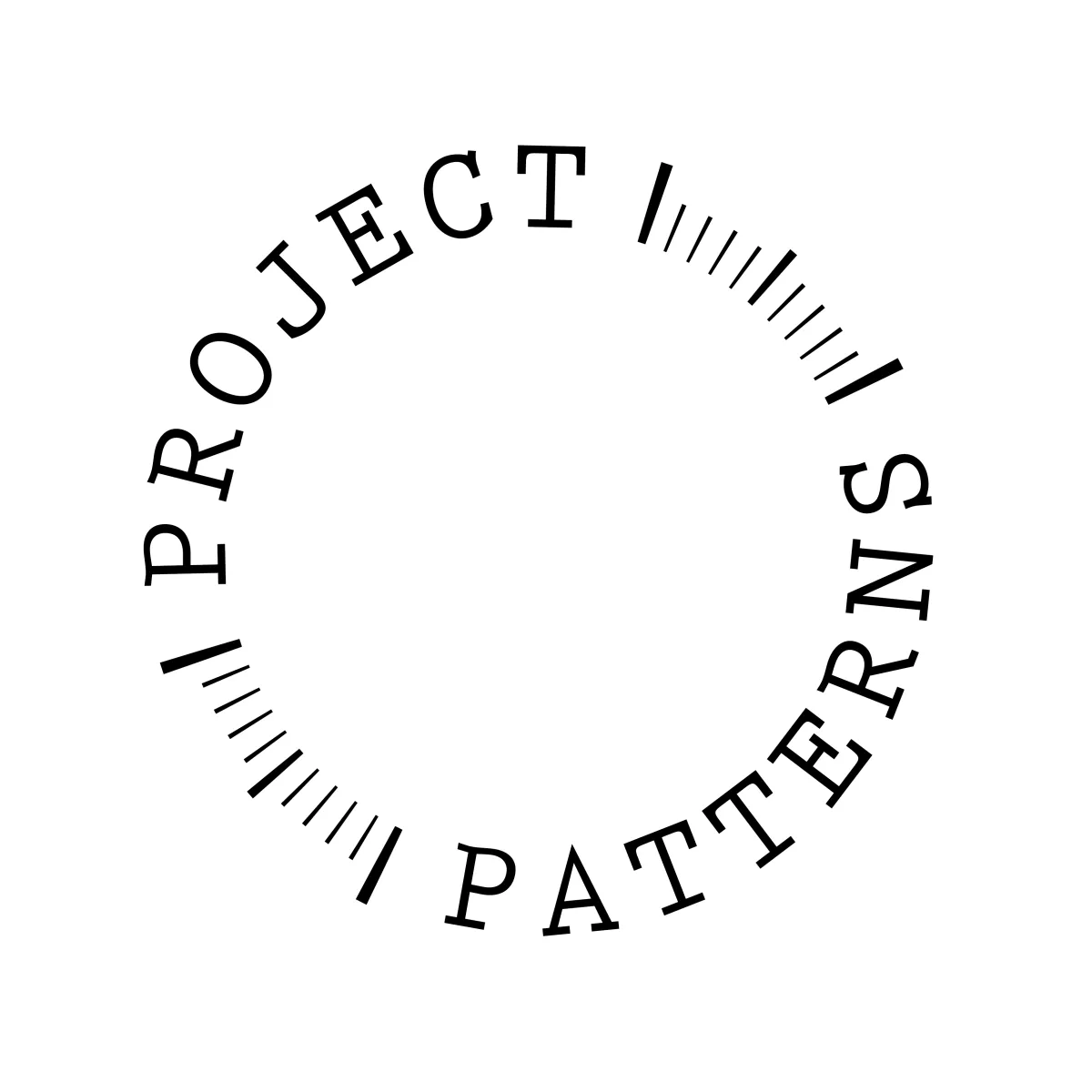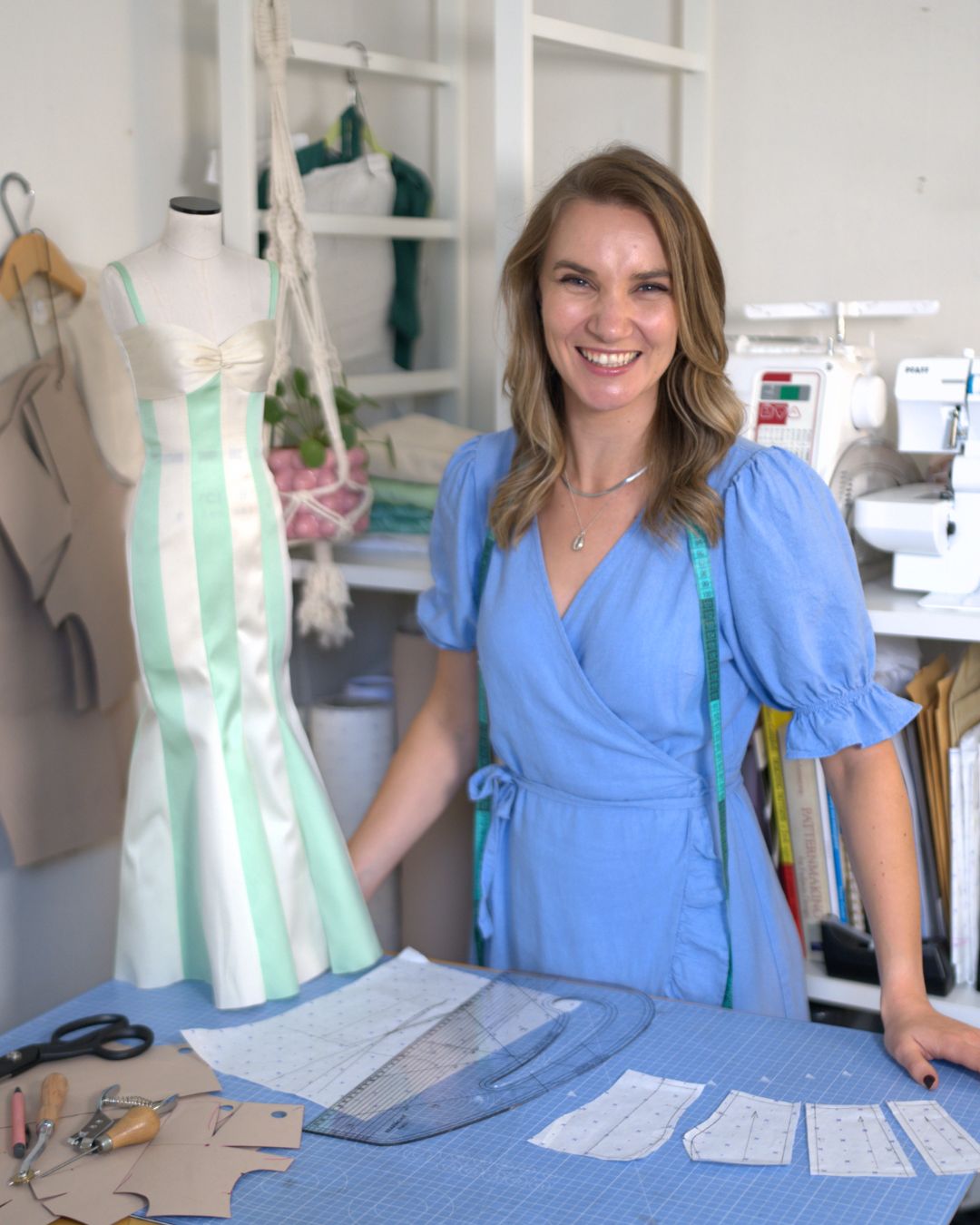Stuck in Your Head? 3 Pattern Drafting Roadblocks (And What to Do Instead)
Stuck in Your Head? 3 Pattern Drafting Roadblocks (And What to Do Instead)
If you’ve ever sat staring at your self-drafted pattern wondering if you’ve completely messed it up, this one’s for you.
Drafting your own patterns is empowering, but it can also be overwhelming, especially when there’s no one to tell you if you’re “doing it right.” Between the lack of instructions, the pressure to get everything perfect, and the rabbit hole of second-guessing, it’s no wonder you feel stuck.
You might start a draft with confidence, only to lose steam halfway through, not because you can’t do it, but because you’re not sure if what you’re doing is “right.” And when you’re sewing alone, that uncertainty has nowhere to go but inward.
In this post, we’ll walk through three common roadblocks in pattern drafting, and how to move past them without losing momentum. Whether you’re halfway through your pattern draft or frozen by fear after tracing the first lines, these tips are for you.
Remember: you don’t need more talent, you need more trust in your process, your learning curve, and your ability to figure it out as you go. Let’s get into it.
1. No Instructions? No Problem.
Self-drafted patterns come with a lot of freedom… and zero guidance.
Without a pre-written booklet telling you what to do next, it’s easy to freeze. What order do I sew this in? Should I interface this piece? Wait, is this even going to fit?
And let’s be honest, sometimes the hardest part is just deciding what to do first. When you’re used to following commercial patterns, creating your own steps can feel like an invisible hurdle.
The fix: Create your own mini map.
Write down the steps as if you were explaining it to someone else
Use a basic construction order as your guide (start with darts and shaping → assemble main panels → attach facings/linings → finish details)
If you’re not sure where to begin, look at the inside of a garment you already own or at the instructions for a similar type of garment that you have
Don’t overcomplicate, a sticky note plan is enough to keep you moving
Still unsure? Try sewing a muslin version using your step list as a draft guide. As you go, revise your notes so that next time, you’ve got your own instructions.
self drafted sewing patterns can absolutely work, you just need to become your own pattern instruction writer for a moment. Start simple and expand as you grow.
2. The Overthinking Spiral
You make a small change. Then another. Then you wonder if the first one ruined everything. So you stop.
Sound familiar?
Overthinking is one of the most common pattern drafting mistakes — not because your maths is wrong, but because your confidence gets rattled. It’s like trying to play chess against yourself.
Try this instead:
Draft it the way you think it should be
Walk away for 10 minutes (or an hour, if needed)
Come back and do a reality check: “Will this be wearable? Or am I chasing theoretical perfection?”
Still unsure? Cut it in calico or a test fabric and try it on, the feedback you get from a test toile is more useful than hours of adjusting on paper.
If it’s wearable, keep going. If it’s not, tweak just one thing, not five. You’ll learn faster by doing than by doubting.
Top Tip: Ask yourself: Am I editing this because it won’t work, or because I’m scared it won’t be perfect?
Even a not-quite-right draft teaches you something useful. Every pattern you make builds pattern literacy, that invisible skill that tells you instinctively what needs to shift next time.
3. Perfectionism in Disguise
If you’ve ever googled is pattern drafting hard, chances are, you’re trying to find reassurance that it’s not just you.
And no, it’s not just you. But yes, it can be hard when you expect it to feel perfect the first time. Especially if you're self-taught, it’s easy to set unrealistic standards and forget that drafting is a learned skill, not a one-and-done art.
Here’s the truth:
Most people draft 2–3 versions before things settle
Adjusting is part of the process (not a sign of failure)
Even professionals don’t always get it right on the first go
Your pattern doesn’t need to look “industry-level” to fit beautifully
Instead of aiming for a perfect pattern, aim for a testable one.
You can always refine the fit later, you can’t refine something you never finished. Give yourself permission to make something imperfect on purpose.
You’ll learn far more by making one decent wearable garment than five polished patterns that you’re too scared to cut.
Final Thoughts: Drafting Doesn’t Need to Feel So Heavy
Whether you’re struggling with unclear steps, too many adjustments, or a voice in your head saying “this won’t work,” the best thing you can do is simplify.
Write your own instructions
Draft once, then review
Prioritise progress over perfection
Remind yourself that nothing is wasted - not even the drafts you never wear
And if perfectionism is the thing slowing you down? That’s not a pattern issue, it’s a mindset one.
Troubleshooting pattern drafting isn’t about fixing your lines, it’s about shifting your approach. Give yourself space to learn, play, and evolve as you go.

Want Help With Your Drafting Process?
Inside the Project Patterns membership, we go step-by-step through pattern creation, adjustments, and fit — with support that makes it feel manageable.
You’ll find tutorials, live Q&As, and a whole community that gets how frustrating it can be to draft alone. Whether you’re figuring out your first block or refining your tenth, we’re here for it.
If you want feedback, structure, and a place to ask “is this normal?” - the membership is for you.

